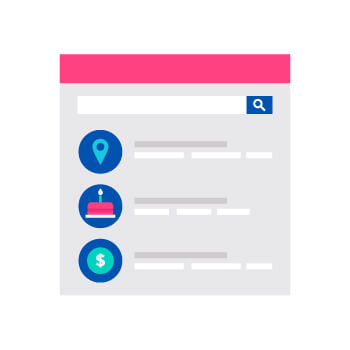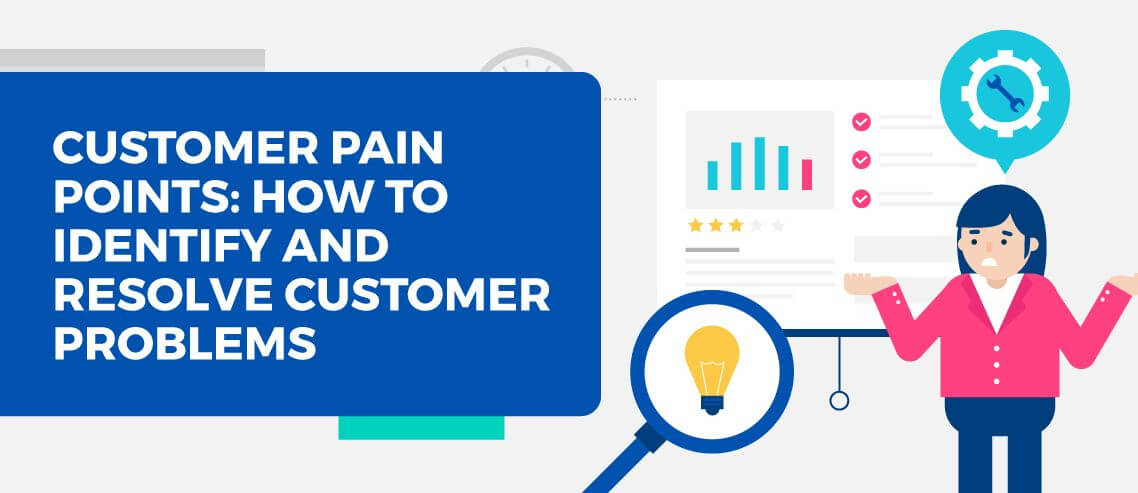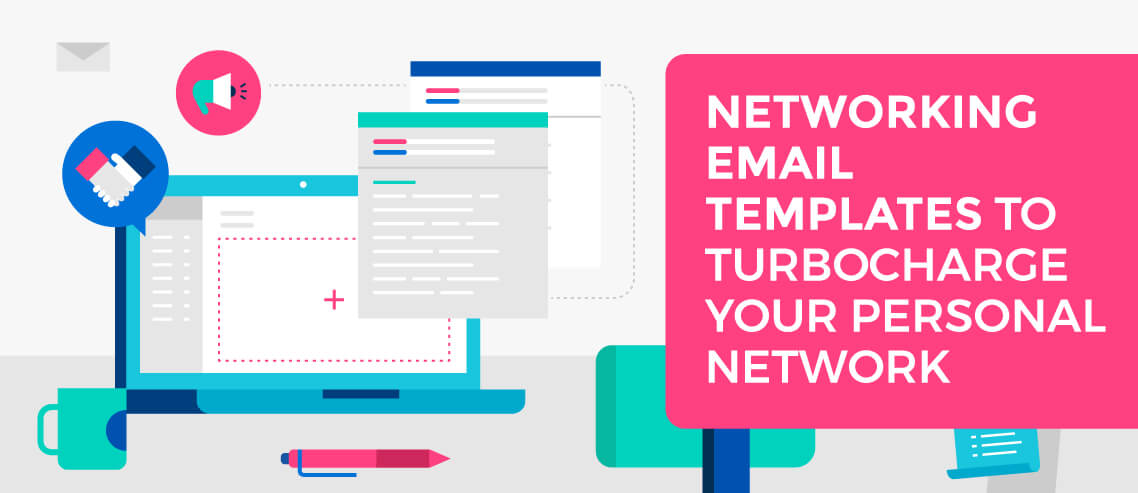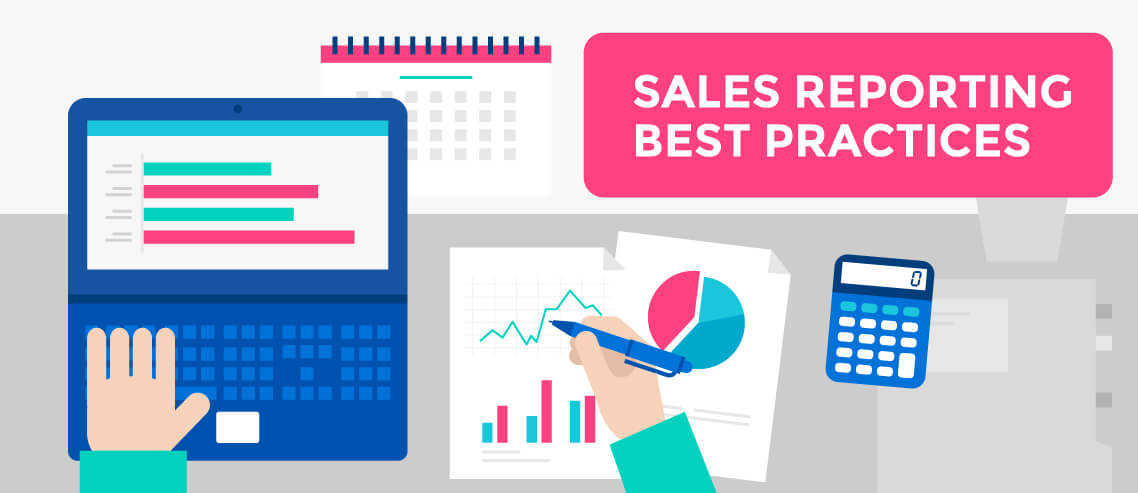A Step-by-Step Process for Qualifying Sales Leads

Contents
Sales teams can sometimes be a little… shortsighted.
Consider this: prospecting is the number one concern for sales professionals. On the face of things, that’s entirely understandable – after all, the more time you spend speaking to prospects, the more deals you’ll close, right?
Not necessarily. The best salespeople understand that prospecting is only one side of the coin. In reality, identifying promising leads earlier in the sales process – and then converting them into sales – should also be a top priority. Too often, it just isn’t.
That’s why you need a tried-and-trusted process for qualifying your sales leads. Here’s how to do it:
1. Create a Crystal-Clear Buyer Profile
 Ever tried your hand at the whole online dating scene?
Ever tried your hand at the whole online dating scene?
Most online dating services ask you to share a few preferences. On a basic level, they want to know the area in which you’re looking to meet people. They might also dig a little deeper – what shared interests are you looking for? What qualities do you find most attractive in a partner?
In other words, they build up a profile of the sort of person you’re hoping to meet. While that profile might not result in you meeting the love of your life, at an absolute minimum it makes it more likely that you’ll at least be able to hold a decent conversation over dinner and drinks.
Sales is no different. If you don’t take the time to understand what you’re looking for in a buyer, how can you realistically expect to find them? Start by asking yourself the following:
- What specific niche does my buyer operate in?
- How senior are they?
- How big is their organization?
- Where are they located?
- How much do they understand about my service?
- What is their budget?
Once you know exactly who you’re looking for, it becomes far simpler to qualify leads that meet your profile – and to discard those that don’t.
2. Understand Their Need
Customer need should come first. It should trump all other considerations. Without it, there’s no reason to continue with a prospect.
Stop wasting everyone’s time. Don’t be a solution in search of a problem.
If they have no need for your product or service, full stop – or if it can’t provide their desired results, do not pass Go. Do not collect $200.
But if you identify a need and results that you can deliver, you’ve got a reason to continue talking.
The need is everything, so establishing it with a prospect is your top priority. It’s the only reason you’re talking with them. You’re not selling. You’re guiding them through to establish what could be better, faster, more streamlined, and so on.
So, how do we identify need? We ask questions. We listen. We ask follow-up questions. We listen some more.
The best sales reps understand the importance of asking the right kinds of questions, be they rapport-building, problem, solution, probing, or otherwise. They know not to ask simple ‘yes/no’ questions, relying on open-ended and thoughtful ones that generate real conversation.
A need may be a frustration with a product or workflow, it may be a short or long-term goal, or it may be a problem they currently have.
Good questions to ask to identify these problems might include:
- What frustrates you most about X?
- What problems are draining the most resources – time, energy, money – at the moment?
- How much is X costing you?
- What is keeping you from hitting your goals/quotas?
Get them talking about the obstacles, issues, and problems keeping them from being better: more revenue, increased productivity and efficiency, faster funnels, greater reach, more exposure, higher retention, and so on.
Your job, of course, is to point those questions at the problem(s) you can solve to determine if it exists. Avoid ‘selling’ at this point; focus instead on identifying the issues holding them back, and what the perfect solution looks like for them.
Do that, and you’ve got your foot in the door. 62% of people want to hear from sales reps about solutions for problems, and 71% want to learn about different opportunities to improve some aspect of their business.
Ask about problems. Ask about frustrations. Ask about goals.
Phrase your probing as ‘does for’ questions: what do they want a product or service to do for them? What results are they looking for, what changes do they want to see, and how will it make things better? Those are needs.
Reduce data security risks? That’s a need. Increase the quality of leads? That’s a need. Grow the pipeline? That’s a need.
Keep the conversation focused on need:
- What measurable results do you expect?
- What do you want a product or service to do for you?
- What personal impact would you like to see?
- How will you measure results?
Do they have a need for your product? If no, move on.
But if yes, continue. Tell them you can help. Tell them their business can be better.
3. Assess the Opportunity
Finding a need does not guarantee a sale.
Essentially, at this stage you need to determine whether the improvement delivered by your product – what it does for them – justifies the expense (money, time, resources). Maybe it does, maybe it doesn’t.
Sean Burke, Chief Client Officer at Prometric, emphasized that sales isn’t about selling a product of service: “Sales is about aligning with your clients to solve business problems. So few people do this. Because of that, millions of dollars are wasted on purchases that fail to deliver their intended results.”
In essence, does their need justify the means?
If you can help them save X number of dollars, or double their pipeline, or increase retention by 25%, the answer is probably ‘yes’.
To that end, work with them at this stage. Crunch some numbers. Compare and contrast. Provide them with the hard data they need to make an informed, smart decision.
Need and opportunity are crucial not only to making the sale, but to developing an ongoing partnership. If they tell you they’d love to automate this or eliminate that, but have no idea why or how it will help them reach specific goals, they may end up very unsatisfied.
Instead, help them assess the opportunity:
- Is there a clear critical business issue (CBI)?
- Is there a clear solution to the problem?
- Is your product demonstrably effective as a solution?
- Does the solution provide value? A decent return-on-investment?
During the course of your conversation, if you can assist them to answer ‘yes’ to those questions, you have opportunity.
Most people respond to numbers, percentages, and most importantly, dollars and cents, so always break down the existing opportunity with that in mind. No jargon. No flowery language or empty promises.
Plain and simple numbers are quick and easy to understand, and make for easy decisions. Establish clear goals and expected results (or educated guesses if nothing else), build trust, help them identify the ‘why’, lean on the numbers, and be prepared for them to need more time to research, check, and confirm the things you discuss. Remember, you’re not selling at this point.
4. Not Scoring Your Leads? Get Started!
So you’ve drawn up a buyer profile. That’s a good start – but it’s only a start.
Sadly for salespeople, not everyone who meets your profile will actually be in a position to buy right now. They might not have the budget. It might not be a priority at the moment. Or they might just have bought from one of your competitors.
That’s why the next step in the process is to start scoring your leads.
Lead scoring is about assessing the quality of a prospect based on the way they engage with your brand. After all, a lead who has clicked on your latest blog post is giving off fewer buying signals than someone who has read every one of your case studies and followed your business on LinkedIn and Twitter.
The more a lead interacts with your content and website, the higher their score. Once they reach a certain level, it’s time to give them a call.
5. Filter Out the Time-Wasters
 While the first two steps will help you to identify the prospects who are most likely to buy from you, that can still leave you with a lot of white noise to cut through. You want to focus your energy on high-priority leads, but you’ve got a pipeline packed with dozens of potential buyers. There are only so many hours in the day. What do you do?
While the first two steps will help you to identify the prospects who are most likely to buy from you, that can still leave you with a lot of white noise to cut through. You want to focus your energy on high-priority leads, but you’ve got a pipeline packed with dozens of potential buyers. There are only so many hours in the day. What do you do?
Looking out for red flags can save you a lot of wasted time down the line.
Your specific red flags will naturally vary based on what your business does and the scale at which it operates. But a few common examples include:
- A lack of engagement with your content
- Partially (or almost entirely) fake contact details
- A location that you would struggle – or be completely unable – to serve
- The wrong company size
- An industry where your solution isn’t that strong
6. Check Your CRM
In some professions, customers might be flattered to be served by multiple people. It’s never a bad thing when you’re in a bar or restaurant and more than one server asks if you have enough drinks, right?
Sales is different. No one wants to deal with multiple salespeople from the same organization – especially if they’ve already opened a dialogue. Best case scenario, it’ll make you look disorganized. Worst case, it might annoy them so much that it costs your company the deal.
Fortunately, it only takes a minute to check your CRM and ensure that none of your sales team are currently speaking to anyone else at the target company – or, indeed, with the same lead you’re about to contact. If they are, make sure you pass that lead onto the right person for follow-up.
7. Review Their Website

This is such a simple step, but a staggering number of salespeople don’t bother with it. Or they do, but they don’t really understand what they’re looking for in the first place.
Just as a TV salesperson speaking to someone in a Patriots jersey will inevitably highlight how fantastic it is to watch football in ultra-HD and with full surround sound, you need to find your own “in.”
Let’s say you’re selling an email automation service. Does your prospect’s website already have an autoresponder set up? Does it appear to tie into their wider marketing funnel, or are there some potential leaks that your product could plug? Are there any other quick wins you can share to get the prospect onside?
A lead is never truly qualified until you’ve taken the time to properly understand their current situation.
8. Understand That Interest ≠ Intent
As salespeople, it’s all too easy to leap to conclusions.
We want more leads, so we sometimes see opportunity where none exists.
This is a bad habit. The sooner you cut it out, the sooner you’ll be able to focus your attention on the real opportunities.
The simplest way to do this? Ask the right questions at the right time (and the right time is almost always “as soon as possible”).
For instance, if your prospect tells you that they normally buy from one of your competitors but that they’re interested in seeing your information, ask them:
- What would make you decide to switch vendors?
- When did you last buy from your current provider?
- How many other companies have you bought from in the last six months?
As with many of the other steps in this process, it’s all about using your intuition – and as much information as you can gather – to separate the non-buyers from the red-hot leads.
9. Know Your Competition

If you don’t know who you’re up against, it’s much harder to craft a compelling message that ultimately persuades a prospect to buy from you, rather than someone else.
Don’t be afraid to ask who you’re competing against. Which similar vendors has your lead worked with in the past? How recently did they last work with them? Or are they evaluating your solution against taking things in house?
What do they love about their current setup? What do they hate?
And, most importantly, what criteria will they be using to ultimately make the decision about whether or not to buy from you? Is it about price, timeframe, features, or something else?
When you drill down to what they’re really interested in, and who else could be doing it for them, you’ll be in a much better position to sell your product in a way that resonates with your prospect.
10. Clarify Their Decision-Making Process
Once you’ve been through the other steps in this process, you should be left with a lead that’s almost qualified. But not completely. Unfortunately, a prospect can tick every other box, only for their decision-making process to let them down.
So why is this such a key factor? Think about it this way…
- If I’m selling a low-price, low-margin product, I probably can’t afford to attend a whole series of proposal meetings and pitches with different parties.
- On the flip side, if my product is complex and requires a lengthy lead time, it’s doubtful that I’ll be able to sell to a prospect who needs a solution right now.
Find out as much as you can about the decision-making process. How many stakeholders are involved? Do they work together, or are they based all over the world? And how long does it typically take them to make their mind up on a purchase?
This step is becoming increasingly important as corporate hierarchies get more complex, with no one person making decisions on their own.
In 2018, the average buyer group consisted of 6-10 people, which is on the rise compared to previous years.
You’ve heard the expression ‘Too many cooks spoil the broth’, right?
With one decision maker, the odds are in the salesperson’s favor 81% of the time. With three decision makers, it drops to 60%, and with five or more, it starts to bottom out.
The bigger the team, the harder the sale. You’ve got to tackle that head-on.
In order to grease the wheels, you need to identify the decision makers who will be impacted by your solution – everyone from the C-suite to HR, from IT to sales, and from marketing to customer service.
So ask. Inquire about department-specific goals and concerns. Ask to be connected to each cog in the wheel.
A few good questions to use at this point include:
- How have you implemented changes of this scope in the past?
- How long did it take to implement X?
- What challenges or surprises did you encounter when implementing X?
- What does your contract review process typically look like?
- Have we missed anyone?
- Given X, don’t you think we should bring Ms. Y into the loop?
Research and prepare for your first contact with each decision maker. You shouldn’t push or expect to get everyone together and on board during that first conversation.
Collecting the necessary details and rallying the team can not and should not be rushed. Push too hard or too fast, and you’ll find yourself unable to convince the stakeholders.
Go slow. Identify the major players and their individual wants and challenges.
11. Discuss Expected Outcomes
The final phase is to discuss the expected outcome and impact.
“This is a business conversation vs. a features and benefit discussion – it provides the measurable results that the client needs to justify their decision.” ~ Sean Burke
The key here is measurable results.
You’ll need to ultimately gather thoughts and feedback from the team you identified, but for now, broach the subject with your initial contact.
Ask:
- How will they measure results? How do they do that now? Will it change with implementation?
- What’s the timeline?
- How will it unfold by week, month, quarter, or year?
- What’s the impact on your business if they do nothing?
Nail down the effect, and you provide them with the justification they need to move forward.
Better Qualification, More Deals
Eleven steps.
Sure, that can seem like a lot to run through every time you find a potential prospect.
But this isn’t about making your prospecting more difficult, or about driving a wedge between your sales team and the marketing department who pass on all those leads.
It’s simply about ensuring that your salespeople are spending their time in the right places, and that they’re concentrating on those leads that have the best chance of closing.





